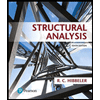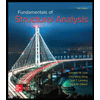
The elevation and station of the high point,
Answer to Problem 1P
The elevation of
Explanation of Solution
Given:
The distance of vertical curve is
The vertical curve intersects at station
The initial grade is
The final grade is
Formula used:
The formula to calculate the distance when the curve is an equal-tangent vertical curve is given by
Here,
The formula to calculate the station of the initial point of vertical curve is given by
Here,
The formula to calculate the station of the final point of vertical curve is given by
Here,
The formula to calculate the elevation of the
Here,
The formula to calculate the distance when the curve is an equal-tangent vertical curve is given by
Here,
The formula to calculate the elevation of the
Here,
The equation of the vertical curve is given by
Here,
Differentiate equation (V) with respect to
The relation between
The formula to calculate the coefficient
The formula to calculate the station of the high point from the
Calculation:
Substitute
The above calculation represents that the point
The point
Substitute
Divide the length of above calculation in
Hence, the stationing of
Substitute
Divide the length of above calculation in
Hence, the stationing of
The number of stations between
Substitute
Substitute
The number of stations between
Substitute
The
Substitute
Substitute
Substitute
Substitute
Substitute
Conclusion:
Thus, the elevation of
Want to see more full solutions like this?
Chapter 3 Solutions
Principles of Highway Engineering and Traffic Analysi (NEW!!)
- A 4.5% grade intersects a -1% grade at STA 5+180 at an elevation of 195m. A vertical curve of length 120m is to be run forward from the point of intersection, and a curve of length 80m is to be extended back forming an unsymmetrical curve. Determine the elevation (m) of the summit.arrow_forwardA 500-ft-long equal-tangent crest vertical curve connects tangents that intersect at station 340 + 00 and elevation 1322 ft. The initial grade is +4.0% and the final grade is -2.5%. Determine the elevation and stationing of the high point, PVC, and PVT. Solve this problem using parabolic equation and offset method.arrow_forward1. A parabolic curve has an ascending grade of 4% which meets a descending grade of 3% at sta. 1+ 180 whose elevation is at 320 m. Compute the elevation of the PVT(point of vertical tangency) if the length of the curve is 280 marrow_forward
- a 400-ft equal tangent sag vertical curve has its PC t station 100 + 00 and elevation 500ft. The initial grade is -4.0% and the final grade is +2.5%. Determine the stationing of the lowest point.(take note that 1 station consists of 100 ft.)arrow_forwardA symmetrical vertical summit curve has tangents of + 4% and – 2%. The allowable rate of changeof grade is 0.3% per meter station. Stationing and elevation of P.T. is at 10 + 020 and 142.63m.,respectively. (Hint: 1 meter each station).1. Compute the length of the curve. 2. Compute the distance of the highest point of the curve from P.C. 3. Compute the elevation of the highest point of the curve.arrow_forwarda +7% grade meets a -4% grade at the vertex V with elevation of 30m and stationing of 2+000. It is required to connect the two tangents with an asymmetrical vertical parabolic curve, 60m on the back tangent and 40m on the forward tangent. Compute the elevation at station 1+950m.arrow_forward
- A symmetrical parabolic curve passes through point A whose elevation is 23.23 m at a distance of 54 m from the PVC. The elevation of the PVC at Station 4 + 100 is 22.56 m. The grade of the back tangent is +2% and the length of the curve is 120 marrow_forwardA 627m equal tangent crest vertical curve has PVC at Sta 17+579 and at elevation 155m. The initial grade is 4.49% and the final grade is -6.82%. Determine the station of PVI.arrow_forwardA 160m long sag parabolic curve connects a -8% grade to a +2% grade. The grades intersect at station 1 + 240 with elevation of 14.87m. Find the elevation of the first quarter point of the curvearrow_forward
- A 160m long parabolic curve connects a -8% grade to a +2% grade.These grades intersect at Sta. 1+240 with elevation of 14.87m. Find the elevation and station of the lowest/highest point on the curveand at the first quarter point of the curve. (DRAW CLEAR FIGURE)arrow_forwardA symmetrical vertical summit curve has tangents of +4% and -2%. The allowable change of grade is 0.3% per meter station. Stationing and elevation of P.T. is at 10+020 and 142.63 respectively. 1. Compute the length of curve. 2. Compute the distance of the highest point of the curve from the P.C. 3. Compute the elevation of the highest point of the curve.arrow_forwardA vertical sag curve has tangent grades of -3.6% and +4.8% meeting at point S whose elevation is 446.5 m. If the length of the curve is 420 m, find the elevation of the PC.arrow_forward

 Structural Analysis (10th Edition)Civil EngineeringISBN:9780134610672Author:Russell C. HibbelerPublisher:PEARSON
Structural Analysis (10th Edition)Civil EngineeringISBN:9780134610672Author:Russell C. HibbelerPublisher:PEARSON Principles of Foundation Engineering (MindTap Cou...Civil EngineeringISBN:9781337705028Author:Braja M. Das, Nagaratnam SivakuganPublisher:Cengage Learning
Principles of Foundation Engineering (MindTap Cou...Civil EngineeringISBN:9781337705028Author:Braja M. Das, Nagaratnam SivakuganPublisher:Cengage Learning Fundamentals of Structural AnalysisCivil EngineeringISBN:9780073398006Author:Kenneth M. Leet Emeritus, Chia-Ming Uang, Joel LanningPublisher:McGraw-Hill Education
Fundamentals of Structural AnalysisCivil EngineeringISBN:9780073398006Author:Kenneth M. Leet Emeritus, Chia-Ming Uang, Joel LanningPublisher:McGraw-Hill Education
 Traffic and Highway EngineeringCivil EngineeringISBN:9781305156241Author:Garber, Nicholas J.Publisher:Cengage Learning
Traffic and Highway EngineeringCivil EngineeringISBN:9781305156241Author:Garber, Nicholas J.Publisher:Cengage Learning





